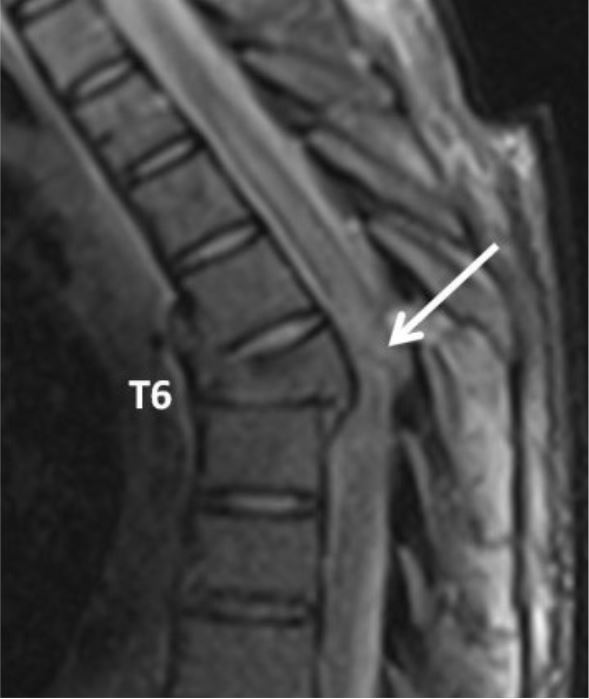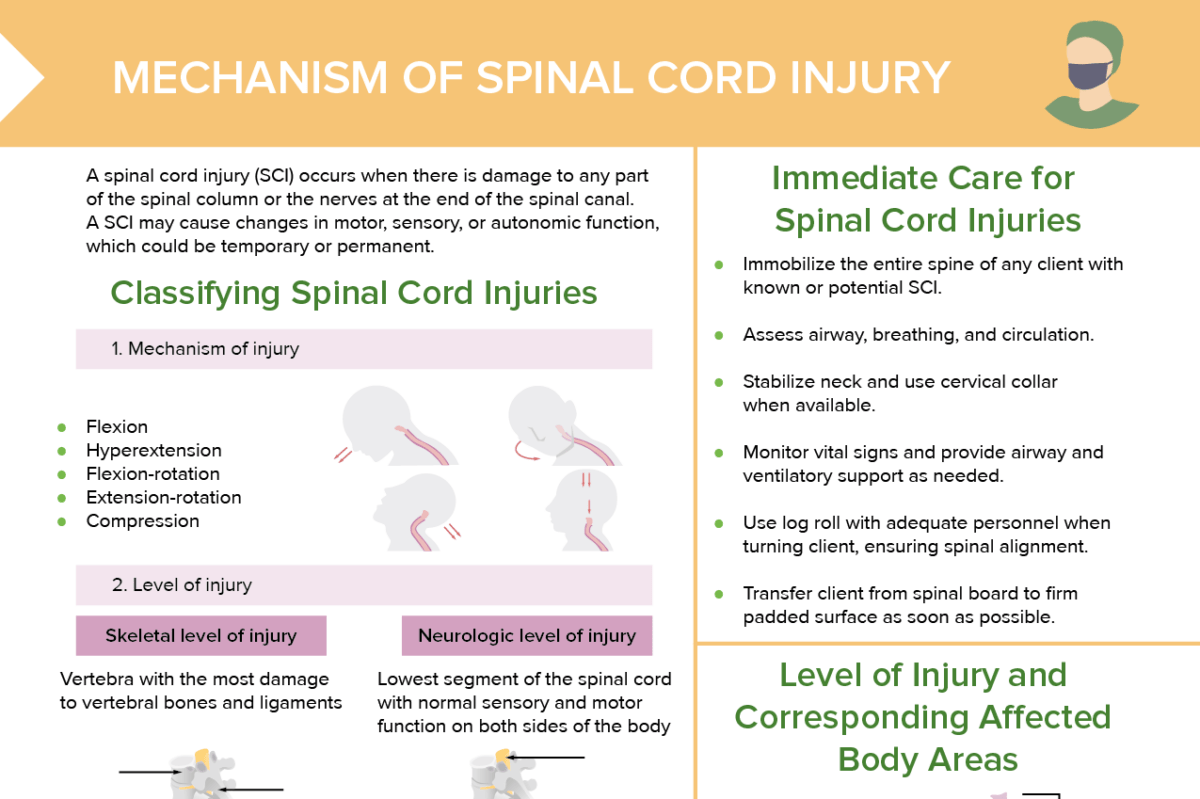Classifying the degree of injury: complete vs incomplete spinal cord injury
- Complete spinal cord injury: total loss of feeling and motion below the injury site
- Incomplete spinal cord injury: may have some sensation or motion below the injury
The degree of impairment depends on the level of the injury. Generally, the higher the injury in the spinal column, the greater the loss of function.
- Tetraplegia:
- Paralysis of all 4 extremities
- Occurs from cervical SCIs
- C4 or higher paralysis of all limbs and trunk
- Paraplegia:
- Paralysis of the legs
- Occurs from thoracic, lumbar, or sacral SCIs
- T6 paralysis below the chest
- L1 paralysis below the waist
Spinal cord injury nursing care priorities
- Spinal cord immobilization to prevent further injury
- Assessment and stabilization of airway, breathing, and circulation
- Complete neurological assessment using ASIA grading scale
- Prevent and promptly treat infection and other complications.
- Provide client education and support psychological adjustment.
How to assess a spinal cord injury
Clients with a suspected SCI should be thoroughly examined using a validated assessment tool, such as the International Standards for Neurological Classification of Spinal Cord Injury from the American Spinal Injury Association (ASIA) examination.
Table: ASIA impairment scale
| A | Complete | No sensory or motor function is preserved inthe sacral segments. |
| B | Incomplete | Sensory function, but not motor function, is preserved below neurological level and extends through sacral segments S4–S5. |
| C | Incomplete | Motor function is preserved below the neurologic level, and most key muscles below the neurologic level have a muscle grade of less than 3. |
| D | Incomplete | Motor function is preserved below the neurologic level, and most key muscles below the neurologic level have a muscle grade that is greater than or equal to 3. |
| E | Incomplete | Sensory and motor functions are normal. |
What finding raises suspicion of a complete spinal cord injury?
A complete spinal cord injury is suspected when there is loss of all sensory and motor function below the level of injury, characterized by:
- Inability to feel anything in the lower body
- Inability to move the lower body
- Loss of bladder and bowel control
Findings should be confirmed by imaging studies.

MRI of spinal cord injury:
Spinal cord transection at the T6 injury level (arrow) noted in a patient who had a fall from 300 feet.
How to educate clients with spinal cord injuries
- Teach how to complete ADLs given new limitations.
- Consider client’s psychosocial, emotional, and financial needs.
- Team will include PT, OT, social work.
- Client/family may need additional information on bowel and bladder functioning, sexual health, skin care, pain management, and risk for mental health concerns.
- Connect client with home health care and rehabilitation services prior to discharge.
What is spinal shock?
Spinal shock is a temporary condition following a spinal cord injury, characterized by loss of reflexes, sensation, and motor activity below the level of the injury. It can resolve within hours to weeks.
What is neurogenic shock?
Neurogenic shock can be life-threatening. It is a type of distributive shock that can occur with a spinal cord injury above T6, and is characterized by bradycardia and hypotension due to disrupted autonomic pathways.
What is autonomic dysreflexia?
Autonomic dysreflexia is potentially life-threatening. It can occur in clients with SCIs above T6 and is characterized by severe hypertension, headache, and other symptoms, often triggered by a distended bladder or bowel.
How to manage bladder and bowel control in clients with SCIs
Management may involve:
- Intermittent catheterization
- Bowel program: diet modification; scheduled toileting; potentially manual evacuation

